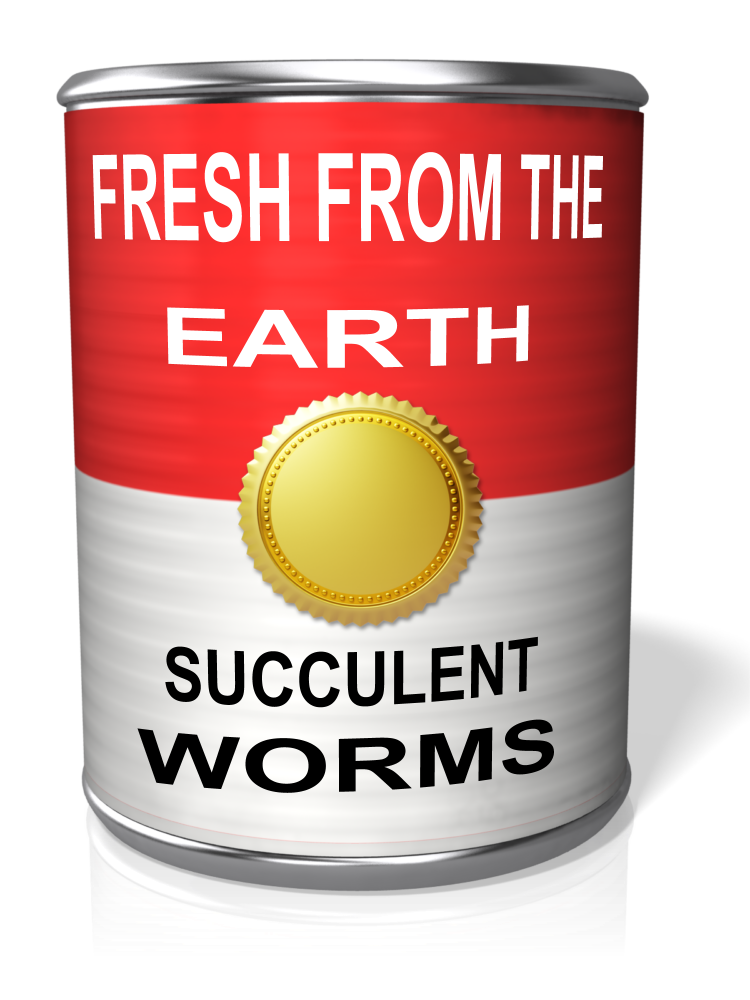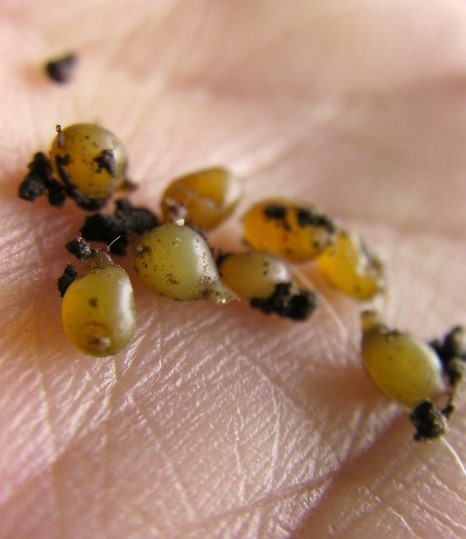The mole is completely dictated by the demand for food, requiring approximately two thirds of its own body weight per day to survive it must source the sustenance the soil can provide.
Although the mole will consume many of the bugs and grubs it can find in the soil its favourite food is the earthworm.
The presence of earthworms in your base location will normally be providing the main diet of your mole so it is important to understand a little about them.
The worm is an invertebrate which means it is an animal with no back bone, they are cold blooded which means their body temperature changes with the temperature of the soil around it. You can now understand why the weather and climate plays an important part on the life of a mole. The favourite diet is completely dependable on its survival by responding to changes in the environment around it. This dictates immediately to the life of the mole. Look at an earthworm up close and you will see it is divided into segments, worms that have these segments are known as annelids and this segmented body allows it to turn and twist as it moves through the soil. These segments have tiny bristles called setae which poke out when the worm needs to grip the inside of the tunnel as it moves along and then it can pull them back in when it does not need them. Not having any eyes, ears, or nose the worm like the mole can still sense objects and light vibrations through its nerve cells. It does have a brain but also five hearts to pump the blood through its body. The life cycle of the worm is also important to the survival of the mole. The worm begins life as an egg, called a cocoon. After hatching the new worms called hatchlings will immediately dig away into the soil and start to eat. They become juveniles and only when they develop reproductive parts are, they called mature worms. The importance of the environment to the worm is not just because it is cold blooded, but also in the existence of them as a species. The soil type, moisture and temperature determine the breeding of the worm, cold or dry soil results in fewer cocoons. Warm wet weather creates a warm moist soil and reduces the time the embryos take to develop in the cocoons, the cocoons contain many eggs but only the strong will develop. In the warm damp spring and autumn this time for them to develop can be greatly reduced to just three weeks. In cold and dry conditions this period of time can be as long as five months. Having hatched the juveniles will grow and will again completely dependent upon the climate of their environment will take anywhere from six to over a year to become an adult. So, in these cold and dry conditions the moles favourite food is often scarce so the need to work areas which is favourable to the presence of the worms in their need to survive will be obvious. The winter and summer months forcing the moles to move to other areas, deep deeper or exploit the actions of the landowners. Earthworms are often seen when you dig in the soil or even just walk across the ground your vibrations sending them scurrying back into the ground. They are covered in a slime or mucus which they need to help them breathe through their skin, they must avoid this drying out so avoid the sunlight. When you next find an earthworm look at it closely and you will be able to determine the age. A mature worm will develop a clitellum, this is a larger ring around part of its body, a juvenile worm will not have one. The clitellum contains the reproductive parts of the worm and has both male and female organs, the male parts produce sperm and the female parts the eggs. The worm despite having both sets of reproductive organs cannot fertilize its own eggs, it must mate with another worm. When the clitellum turns orange, the worm is ready to mate with another worm of the same species. They lie with there clitellum’s touching they will produce a slimy coating to help them stick together. They then exchange sperm and after this mating both worms will produce cocoons. The clitellum will form a sticky covering and this will produce the cocoon that will hold the eggs. The earthworm moves backwards to allow the covering to slide along the worm’s body and the now fertilized eggs stick to the inside surface. When the worm has wriggled free the cocoon drops free and seals up protecting the eggs inside. The worm can only make one cocoon at a time so will require to mate again to repeat the process.
The mole will source its food from wherever it can and often they are seen to be tunnelling just under the surface, this is called running spooked, scribbling, joking or jigging depending on which part of the country you are found. The reason they do this is to harvest the food in or just under the organic layer. They do this also to move safely to other areas. The majority of the time it is to obtain the available food that will be found there. By understanding the impact the weather and the soil has on the available food you now can fully understand the reason for this.
In times of prolonged dry spells it is not uncommon to have sudden storms or heavy rainfall, this welcome dampness will encourage worms in estivation to move and the moles sensing this will respond accordingly, they quickly lift the organic layer and create tunnels to gather the takings.
It is not just worms they will consume, they eat many other bugs and grubs and enjoy a meal of leatherjackets. These are the larvae of the crane fly most people know them as the Daddy Long Legs . These larvae damage the lawns, when they are moving in the soil especially at the time they emerge up out of the ground, the mole will again hunt them out and devour them. So if you see a mole causing this type of damage look at the reasons and what food it may be feeding upon.



